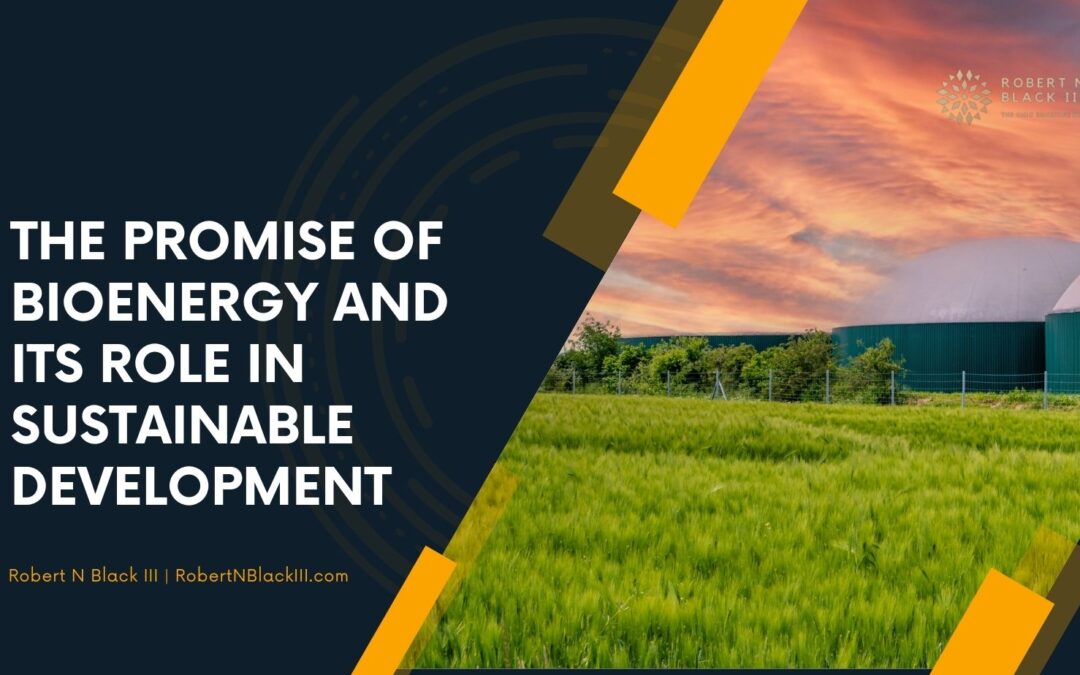In pursuing a more sustainable and environmentally friendly energy landscape, bioenergy has emerged as a promising contender. Bioenergy holds the potential to address multiple challenges simultaneously, from energy security to waste management and climate change mitigation.
Bioenergy and Sustainability:
Reducing Greenhouse Gas Emissions: Bioenergy offers a carbon-neutral or even carbon-negative energy solution. When organic materials are converted into biofuels like biogas, biodiesel, or bioethanol, the carbon dioxide released during combustion is offset by the carbon dioxide absorbed during the growth of the source plants.
Waste Valorization: Bioenergy production provides an avenue for utilizing organic waste materials that would otherwise end up in landfills, contributing to pollution and emitting greenhouse gases.
Local Economic Development: Bioenergy production can stimulate local economies by creating agriculture, forestry, and biofuel processing jobs. This can benefit rural communities, promoting economic growth and reducing unemployment.
Diversification of Energy Sources: Bioenergy diversifies the energy mix, reducing dependence on fossil fuels. This diversification enhances energy security, mitigates the risks associated with oil price fluctuations, and minimizes geopolitical tensions related to energy resources.
Rural Development: Culturing energy crops and sustainable management of forests for bioenergy can revitalize rural areas, encourage sustainable land use practices, and provide income sources for farmers and landowners.
Types of Bioenergy:
Biogas: Biogas is produced through the anaerobic digestion of organic matter, such as agricultural residues, food waste, and sewage. It contains methane, a potent greenhouse gas, which can be captured and used as a clean energy source for heating, electricity generation, and even as a vehicle fuel.
Biofuels: Biofuels like biodiesel and bioethanol are produced from feedstocks such as vegetable oils, algae, and crops like sugarcane and corn. These fuels can be blended with conventional fuels to reduce carbon emissions from transportation.
Solid Biomass: Wood pellets, agricultural residues, and other solid organic materials can be burned directly for heating or electricity generation.
Challenges and Considerations:
Food vs. Fuel Debate: The cultivation of energy crops raises concerns about potential competition with food crops for land and resources. Striking a balance between food security and bioenergy production is essential.
Land Use Implications: Expanding energy crop cultivation should be done with careful consideration of environmental impacts and land use changes. Avoiding deforestation and protecting biodiversity are key considerations.
Sustainability of Feedstocks: Ensuring that feedstocks for bioenergy are grown and harvested sustainably is crucial to prevent habitat destruction, soil degradation, and excessive water usage.
Technology Efficiency: Efficient conversion technologies are needed to extract maximum energy from feedstocks and minimize waste. Continuous technological advancements can enhance the efficiency and environmental performance of bioenergy systems.
Policy Support: Clear policies, incentives, and regulations are necessary to promote sustainable bioenergy production and ensure it aligns with broader sustainability goals.

